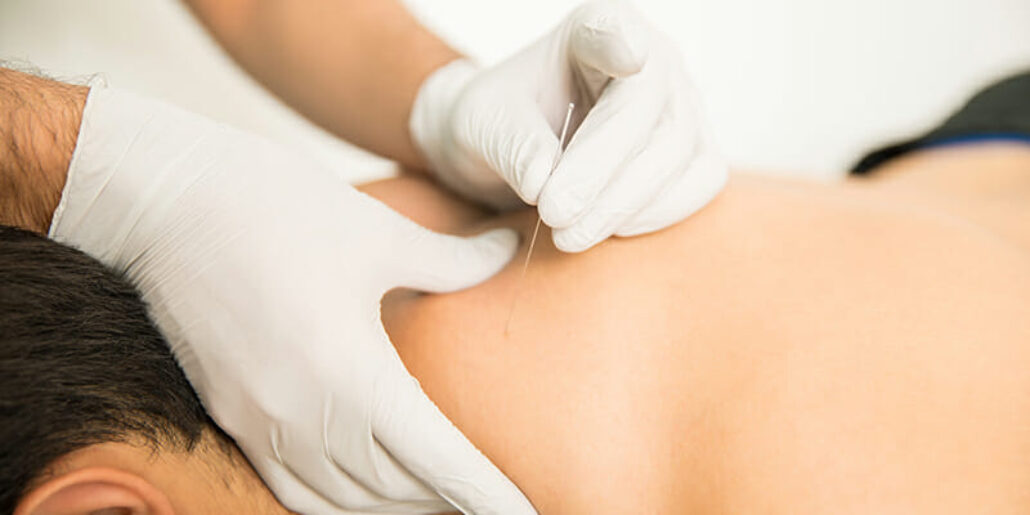The human body has an astonishing capacity to heal itself. But sometimes, we can benefit from a little boost to our body’s healing systems. Dry needling is one tool to do just that.
What is dry needling?
Dry needling is a technique used to treat trigger points in muscles on patients of all ages and diagnoses. Sometimes, due to injuries or poor posture, muscles can develop taut bands that become irritated and tender. Because the muscle is contracted at these points, they can cause pain.
With more chronic-type inflammation, the healing process is not allowed to complete its duties, causing these areas of the muscle to not get enough blood flow containing the nutrients needed to heal.
This is where dry needling can help. It uses a solid‐core needle (not a hollow needle like the one you would use for an injection) to stimulate the tender points in the muscle. In response to that stimulus, the body sends increased blood flow to the spot, providing increased oxygen and nutrition — and facilitating healing. It’s like hitting the reset button on the muscle.
The technique can be done all over the body. Many patient are seen for back and neck pain with this technique, but dry needling can be helpful anywhere.
Does it hurt?
Most people do not feel the needle going into the skin, but the stimulation feels a bit strange — kind of like a tiny, localized muscle cramp.
Although some people feel better after the first session, most people need two or three sessions to get pain relief. Ten to 12 sessions is generally the maximum range. After that, if there is no improvement in pain, it’s time to try other treatment options.
How is dry needling different from acupuncture?
Dry needing uses the same kind of needle as acupuncture does. However, acupuncture is rooted in Eastern medicine and is based on chi energy flow. In contrast, dry needling is based on Western medicine and treats the muscle or facet pain directly. Dry needling allows the therapist to have an effect on the exact muscle or tissue that needs to be addressed.
Summit dry needling specialists recommend that dry needling be done as part of a larger treatment plan that involves exercise. A larger treatment plan combines dry needling with exercise. Exercise will create long‐term improvement, and the two work best in conjunction. Dry needling is the beginning of a therapeutic process that when combined with exercise can lead to wonderful improvements of pain and symptoms.
Summit Orthopedics supports healthy lifestyles
At Summit Orthopedics, we are committed to providing the resources, tools, and expertise you need to achieve your personal fitness goals.
Start your journey to a more active self. Schedule an appointment online, or call us at (651) 968–5201 to schedule a consultation.
